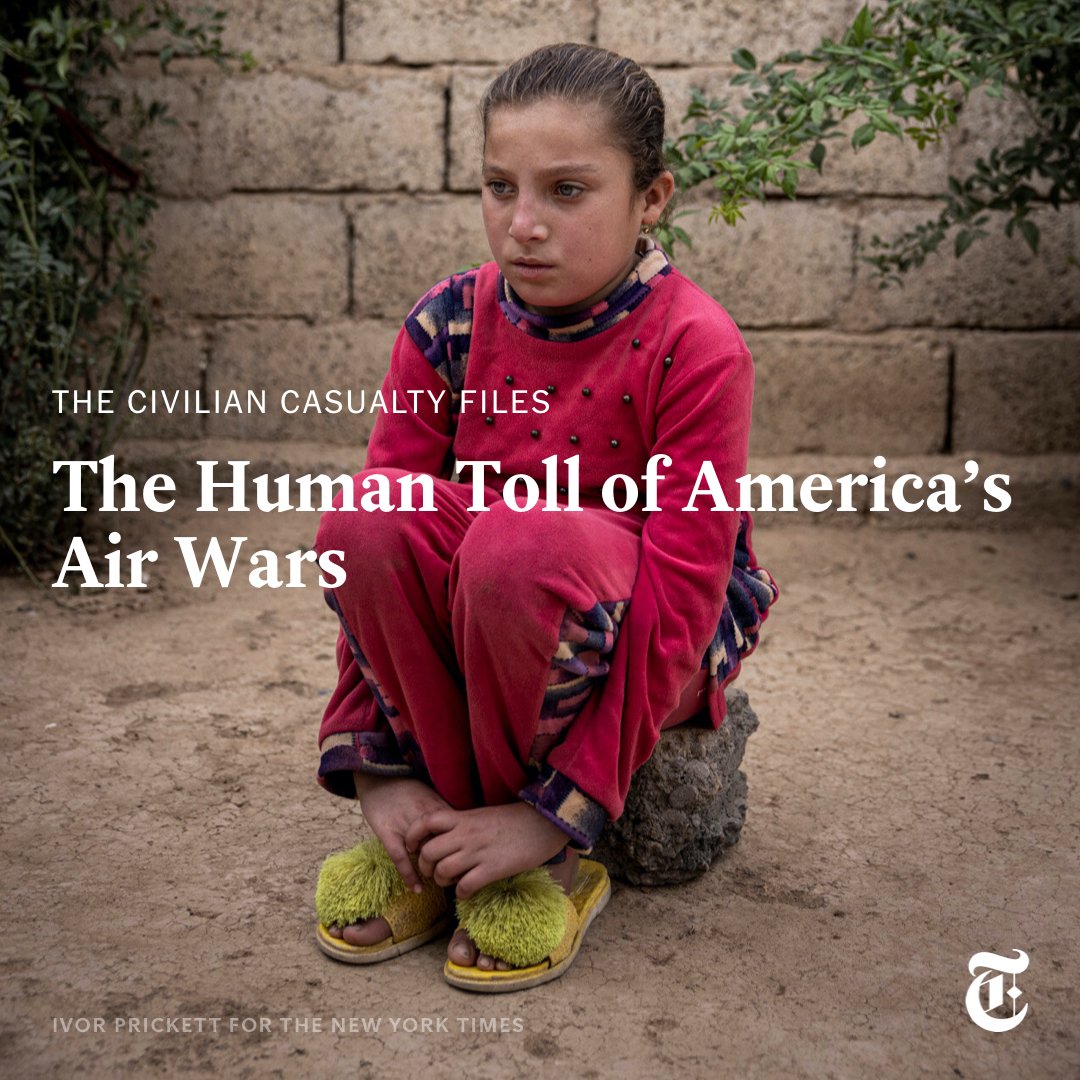
A 5-year New York Times investigation into hidden Pentagon records shows that a pattern of failures in U.S. airstrikes in the Middle East has killed thousands of civilians, many of them children. None of these records show findings of wrongdoing. nyti.ms/3p6GQLv
The military’s own confidential assessments of over 1,300 reports of civilian casualties since 2014, obtained by The New York Times, lay bare how the air war has been marked by rushed and faulty targeting, despite promises of precision and transparency. nyti.ms/3p6GQLv 

In only a handful of cases were the assessments made public. Not a single record provided includes disciplinary action. Many survivors were left with disabilities requiring expensive medical care, but the U.S. military has made few condolence payments.
nyti.ms/3p6GQLv
nyti.ms/3p6GQLv
More than 5,400 pages of records expose an institutional acceptance of an inevitable collateral toll. In the logic of the military, a strike, however deadly to civilians, is acceptable as long as it was approved in accordance with the chain of command.
nyti.ms/3p6GQLv
nyti.ms/3p6GQLv
We are making these hidden Pentagon records public. Ground reporting at the sites of U.S. airstrikes revealed important discrepancies and oversights, including the number of people killed or injured. nyti.ms/3GVZ6xy
The documents were obtained through Freedom of Information requests beginning in March 2017 and subsequent lawsuits. To date, The New York Times has received 1,311 reports examining airstrikes in Iraq and Syria from September 2014 to February 2018.
nyti.ms/3GVZ6xy
nyti.ms/3GVZ6xy
Our investigation has undercut a central promise of the U.S. military: that precision bombs and drones would kill enemies while minimizing the risks to civilians.
Read the entire first part of the investigation here:
nyti.ms/3p6GQLv
Read the entire first part of the investigation here:
nyti.ms/3p6GQLv
For @NYTMag, the investigative reporter @AzmatZahra and the photographer @ivorprickett traveled to the Middle East to talk to the survivors and relatives of victims of U.S. airstrikes. Part II of the investigation will be published on Monday. 

• • •
Missing some Tweet in this thread? You can try to
force a refresh











